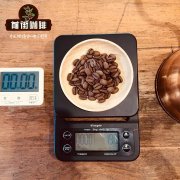Introduction to the coffee producing area of Bujisu Elgon, Uganda _ flavor characteristics of Uganda washed coffee beans

Professional coffee knowledge exchange more coffee bean information please follow the coffee workshop (Wechat official account cafe_style)
The territory of Uganda is mostly a plateau about 1200 meters above sea level, and there are many lakes, known as "plateau water villages." Lake Victoria, the second largest freshwater lake in the world, has 42.8% of its area in Uganda. In short, the country is not short of water.
The country is on the equator, and most areas belong to the savanna climate, but because of the relatively high terrain, the year is only divided into dry season and rainy season. Coupled with the vertical and horizontal lakes and rivers, abundant rainfall, luxuriant plants, the average annual temperature is only about 23 degrees Celsius. It's so suitable for growing coffee.
In fact, the production of Arabica beans (Arabica) accounts for only about 15% of Uganda's total coffee production, what about the rest? It's all Robusta. Large areas of robusta coffee trees naturally grow in Kibale Forest National Forest Park in southern Uganda.
Coffee beans are Uganda's main export goods, and coffee exports are its main source of foreign exchange income. 25% of the working population is engaged in related industries. Most of the beans are Robusta, and only 6% of the beans are Arabica. In order to improve the quality and reduce the cost of coffee, Uganda cancelled the exclusive management right of the Coffee Management Committee (Coffee Marketing Board, referred to as CMB) in November 1990. Most of the work originally undertaken by the Coffee Management Committee has now been handed over to the cooperative organization.
In Uganda (Uganda), Arabica coffee beans account for only 10 per cent of the country's total coffee production, but it is enough to attract attention. Uganda's best coffee is mainly produced in the mountains of Elgon and Bugisu along the Kenyan border in the north and Ruwensori in the west, and is available for export in January or February of each year.
According to statistics, during the 14-year period in 2013, Uganda exported about 700000 sacks of Arabica coffee raw beans (about 60 kilograms per sack). The most common beans grown in this country are: SL14, SL28, Kent and Typica.
Uganda is a landlocked country, which is a problem. If you want to export coffee beans, you must transport raw beans to ports through neighboring countries (Kenya, Tanzania) and then to other parts of the world. BUT, the war in Africa has never stopped, and political relations are often not good. Neighboring countries say they swallow your beans and swallow you some beans. Or the dead hot coffee beans put in the transport vehicle will be stuck and will not be released, and so on, the quality will not be drinkable. But it is said that things are much better now. You see, there are a lot of good Ugandan coffee this year.
When looking up Ugandan materials on the Internet, there is another interesting discovery! There is a Coffee production training Manual (Uganda Training Materials for Coffee Production) 2014, authorized by MAAIF (Ugandan Ministry of Agriculture, Animals and Fisheries) and co-edited by Uganda Coffee Department and others. The aim is to improve production capacity and efficiency, simply do not be too practical (all English), hand in hand!
END
Important Notice :
前街咖啡 FrontStreet Coffee has moved to new addredd:
FrontStreet Coffee Address: 315,Donghua East Road,GuangZhou
Tel:020 38364473
- Prev

Coffee beans at White Nile washing Station in Nebbi, Uganda. How to make Ugandan coffee?
Professional coffee knowledge exchange more coffee bean information please pay attention to the coffee workshop (Wechat official account cafe_style) mentioned boutique coffee, in recent years, African beans can be said to be a sudden rise, in many coffee bean product evaluation, have a good performance. It is also recognized and liked by more and more people. But maybe when it comes to African beans, we have more feedback.
- Next

Uganda kava cooperative kabeywa kabela bid coffee beans how to drink_Uganda coffee grading
Professional coffee knowledge exchange More coffee bean information Please pay attention to coffee workshop (Weixin Official Accounts cafe_style) Uganda coffee beans-Cabela washing 7#Uganda coffee flavor description: bright lemon fruit acid blend light vanilla flavor, chocolate taste mellow, red wine aroma is more eye-catching. Uganda is located at the headwaters of the Nile River and is landlocked in Africa without the sea, although it is similar to other countries.
Related
- Detailed explanation of Jadeite planting Land in Panamanian Jadeite Manor introduction to the grading system of Jadeite competitive bidding, Red bid, Green bid and Rose Summer
- Story of Coffee planting in Brenka region of Costa Rica Stonehenge Manor anaerobic heavy honey treatment of flavor mouth
- What's on the barrel of Blue Mountain Coffee beans?
- Can American coffee also pull flowers? How to use hot American style to pull out a good-looking pattern?
- Can you make a cold extract with coffee beans? What is the right proportion for cold-extracted coffee formula?
- Indonesian PWN Gold Mandrine Coffee Origin Features Flavor How to Chong? Mandolin coffee is American.
- A brief introduction to the flavor characteristics of Brazilian yellow bourbon coffee beans
- What is the effect of different water quality on the flavor of cold-extracted coffee? What kind of water is best for brewing coffee?
- Why do you think of Rose Summer whenever you mention Panamanian coffee?
- Introduction to the characteristics of authentic blue mountain coffee bean producing areas? What is the CIB Coffee Authority in Jamaica?

